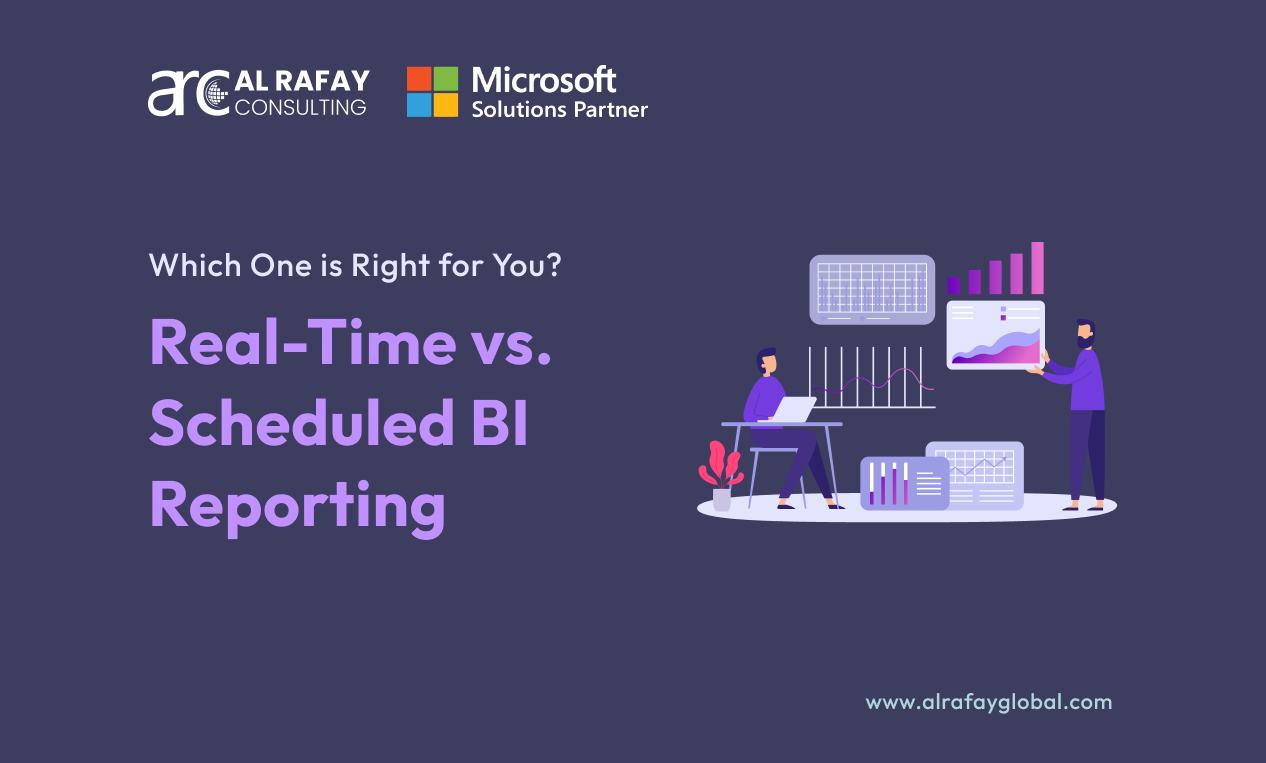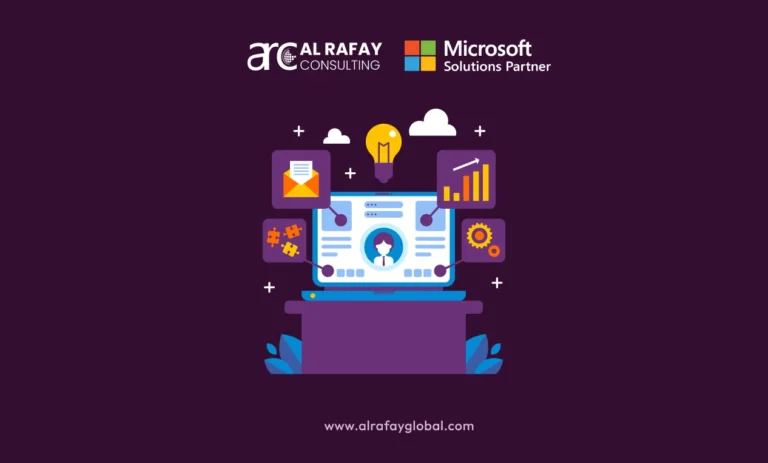Data-driven decision-making has become indispensable. Business Intelligence (BI) reporting plays a crucial role in transforming raw data into actionable insights, allowing businesses to make informed decisions and gain a competitive edge. The ability to swiftly analyze and act on data can mean the difference between success and failure.
BI reporting provides businesses with the insights needed to optimize operations, identify opportunities, and mitigate risks. According to a survey by Dresner Advisory Services, 54% of companies identify BI as “critical” or “very important” to their current and future strategies.
This blog aims to provide a comprehensive comparison between real-time and scheduled BI reporting, offering insights into their respective advantages, disadvantages, and use cases. By the end of this article, you will have a clearer understanding of which reporting method aligns best with your business objectives and operational requirements.
So, let’s start.
What is BI Reporting?
BI reporting is a process that involves collecting, processing, and analyzing data to generate reports that help businesses make informed decisions. These reports can take various forms, including dashboards, data visualizations, and traditional tabular reports.
Key Components of BI Reporting Systems
- Data Sources: The origin points from which data is collected, such as databases, CRM systems, and external data feeds.
- ETL Processes: Extraction, Transformation, and Loading processes that prepare data for analysis.
- Data Warehouses: Central repositories where integrated data is stored.
- Reporting Tools: Software applications used to create and distribute reports.
- Data Sources: The origin points from which data is collected, such as databases, CRM systems, and external data feeds.
Types of BI Reporting
Ad-hoc Reporting
Ad-hoc reporting allows users to create custom reports on the fly without relying on pre-built templates. This type of reporting is useful for answering specific business questions and exploring data from different angles.
Operational Reporting
Operational reporting focuses on monitoring day-to-day business activities. It provides real-time or near-real-time data to support operational decision-making, ensuring that business processes run smoothly.
Analytical Reporting
Analytical reporting involves analyzing historical data to identify trends, patterns, and insights. It supports strategic decision-making by providing a deeper understanding of business performance over time.
Real-Time Reporting
Real-time reporting delivers up-to-the-minute data, allowing businesses to respond swiftly to changing conditions. This type of reporting is essential for environments where timely decision-making is critical.
Scheduled Reporting
Scheduled reporting involves generating reports at predefined intervals (e.g., daily, weekly, monthly). It ensures that stakeholders receive consistent updates without the need for manual intervention.
Real-Time BI Reporting
Definition and Characteristics
Real-time BI reporting provides instantaneous access to data as it becomes available. This method relies on continuous data feeds and in-memory computing to deliver up-to-date information.
Characteristics and Key Features
● Immediate Data Insights: Provides the most current data available, enabling rapid response to changes.
● Dynamic Dashboards: Interactive dashboards that update in real-time, offering a live view of business performance.
● Automated Alerts: Notifications triggered by specific events or thresholds, ensuring that critical issues are addressed promptly.
Technology and Tools
Several technologies support real-time BI reporting, including data streams, in-memory computing, and complex event processing (CEP).
Data streams involve the continuous flow of data from various sources, such as IoT devices, social media, and transaction systems.
In-memory computing stores data in RAM, allowing for rapid access and processing, which is essential for real-time analytics.
Complex event processing (CEP) involves analyzing and responding to data streams in real time, enabling businesses to detect patterns and anomalies as they occur. Popular tools and platforms for real-time BI reporting include Microsoft Power BI, Tableau, and Apache Kafka.
Power BI offers real-time dashboards and robust data integration capabilities, making it a popular choice for businesses seeking real-time insights. Tableau is renowned for its powerful data visualization features and real-time analytics capabilities, while Apache Kafka is a distributed streaming platform used for building real-time data pipelines.
Advantages
Real-time BI reporting offers several advantages that can significantly impact business performance. One of the primary benefits is the ability to gain immediate data insights, allowing businesses to act quickly on current information and improve their agility. Enhanced decision-making capabilities are another advantage, as real-time reporting provides up-to-date data that supports timely and informed decisions.
Additionally, real-time BI reporting can improve operational efficiency by enabling businesses to monitor and optimize their processes continuously. However, these benefits come with certain challenges, including higher implementation costs, complexity in data management, and the potential for information overload.
Disadvantages
While real-time BI reporting provides numerous benefits, it also comes with certain disadvantages.
One of the main challenges is the higher cost of implementation, as real-time systems often require advanced infrastructure and sophisticated technologies. Additionally, managing data in real time can be complex, as it involves processing large volumes of data continuously and ensuring data accuracy and consistency.
Another potential drawback is the risk of information overload, where users may be overwhelmed by the sheer amount of data and struggle to identify the most relevant insights. Despite these challenges, real-time BI reporting can be a valuable tool for businesses that require immediate access to data and rapid decision-making capabilities.
Scheduled BI Reporting
Definition and Characteristics
Scheduled BI reporting involves generating reports at predefined intervals, such as daily, weekly, or monthly. This method ensures that stakeholders receive consistent updates without the need for manual intervention.
The key characteristics of scheduled BI reporting include predictable reporting cycles, easier data management, and lower implementation costs. Scheduled reporting systems are designed to handle periodic data processing, allowing businesses to plan and allocate resources efficiently.
Predictable reporting cycles ensure that reports are delivered on time, providing stakeholders with regular updates on business performance. Easier data management is another advantage, as scheduled reporting allows for more controlled and systematic data processing.
Technology and Tools
Technologies supporting scheduled BI reporting include ETL processes, data warehouses, and traditional reporting tools.
ETL processes are used to extract data from various sources, transform it into a suitable format, and load it into a data warehouse for storage and analysis. Data warehouses serve as central repositories where integrated data is stored and managed, providing a single source of truth for reporting.
Traditional reporting tools, such as Crystal Reports and SQL Server Reporting Services (SSRS), are commonly used for scheduled reporting. Crystal Reports offers robust reporting capabilities, including the ability to create complex reports with detailed formatting and data visualization. SSRS is a powerful reporting platform that provides a range of features for creating, managing, and delivering scheduled reports.
Advantages
Scheduled BI reporting offers several advantages that can benefit businesses in various ways.
One of the main benefits is the predictability of reporting cycles, which ensures that reports are delivered on time and stakeholders receive regular updates. This can help businesses maintain a consistent reporting schedule and avoid delays in decision-making.
Easier data management is another advantage, as scheduled reporting allows for more controlled and systematic data processing. This can simplify data integration and ensure data accuracy and consistency. Additionally, scheduled BI reporting typically has lower implementation costs compared to real-time reporting, making it a cost-effective option for businesses with limited resources.
Disadvantages
One of the main drawbacks is the potential for outdated information, as reports are generated at predefined intervals and may not reflect the most current data. This can limit the flexibility of reporting and may result in delays in decision-making.
Another disadvantage is the limited flexibility of scheduled reporting, as it may not be able to accommodate ad-hoc reporting needs or provide real-time insights. Additionally, scheduled reporting may not be suitable for environments where timely decision-making is critical, as the predefined reporting cycles may not provide the necessary level of responsiveness.
Use Cases and Scenarios
Real-Time BI Reporting Use Cases
Real-time BI reporting is particularly beneficial in industries and scenarios where timely decision-making is critical. In the finance industry, for example, real-time reporting can provide immediate insights into market trends and financial performance, enabling businesses to make informed investment decisions and respond quickly to market changes. In the e-commerce industry, real-time reporting can help businesses monitor customer behavior and sales performance in real time, allowing them to optimize marketing strategies and improve customer experiences. In the logistics industry, real-time reporting can provide real-time visibility into supply chain operations, helping businesses identify and address potential issues before they impact performance.
Scheduled BI Reporting Use Cases
Scheduled BI reporting is suitable for industries and scenarios where regular updates are sufficient and real-time insights are not critical. In the manufacturing industry, for example, scheduled reporting can provide regular updates on production performance and inventory levels, helping businesses plan and allocate resources efficiently. In the healthcare industry, scheduled reporting can provide regular updates on patient outcomes and operational performance, supporting strategic decision-making and quality improvement initiatives. In the education industry, scheduled reporting can provide regular updates on student performance and enrollment trends, helping institutions make data-driven decisions and improve educational outcomes.
Factors to Consider
Business Needs and Objectives
When choosing between real-time and scheduled BI reporting, it is important to consider your business needs and objectives. Real-time reporting is ideal for businesses that require immediate access to data and rapid decision-making capabilities, while scheduled reporting is suitable for businesses that need regular updates and can accommodate periodic reporting cycles. By aligning your reporting method with your business goals, you can ensure that you are using the most effective approach to support your decision-making processes.
Data Volume and Velocity
Another important factor to consider is the volume and velocity of data generated by your business. Real-time reporting is well-suited for environments with high data volume and velocity, as it can handle continuous data streams and provide up-to-date insights. Scheduled reporting, on the other hand, maybe more suitable for businesses with lower data volume and velocity, as it allows for more controlled and systematic data processing. By assessing the amount and speed of data generation, you can determine which reporting method is most appropriate for your business.
Cost and Resource Allocation
Budget considerations are also important when choosing between real-time and scheduled BI reporting. Real-time reporting typically has higher implementation costs, as it requires advanced infrastructure and sophisticated technologies. Scheduled reporting, on the other hand, generally has lower implementation costs, making it a cost-effective option for businesses with limited resources. Additionally, it is important to consider the availability of technical resources, as real-time reporting may require specialized skills and expertise to manage and maintain.
Decision-Making Timelines
The urgency and frequency of decision-making processes are also important factors to consider. Real-time reporting is ideal for businesses that require immediate insights and rapid decision-making capabilities, while scheduled reporting is suitable for businesses that can accommodate periodic updates and do not require real-time insights. By assessing the urgency and frequency of your decision-making processes, you can determine which reporting method is most suitable for your needs.
Technical Infrastructure
Finally, it is important to consider your existing IT infrastructure and its capabilities. Real-time reporting requires advanced infrastructure and sophisticated technologies, such as in-memory computing and complex event processing, to handle continuous data streams and provide up-to-date insights. Scheduled reporting, on the other hand, can be implemented using more traditional infrastructure and technologies, such as ETL processes and data warehouses. Additionally, it is important to consider scalability and future-proofing, as your reporting needs may evolve over time and require more advanced capabilities.
Making the Decision
Evaluation Framework
To make an informed decision between real-time and scheduled BI reporting, it is important to develop an evaluation framework that considers your business needs, data volume and velocity, cost and resource allocation, decision-making timelines, and technical infrastructure. By using a scoring and weighting system, you can assess the relative importance of each factor and determine which reporting method is most suitable for your business. This approach can help you make a more objective and informed decision, ensuring that you choose the reporting method that best aligns with your business goals and operational requirements.
Implementation Strategies
Once you have chosen a reporting method, it is important to develop a clear implementation strategy to ensure a smooth transition. This may involve setting up the necessary infrastructure, configuring reporting tools, and training staff to use the new system effectively. It is also important to establish best practices for data management and reporting, such as defining data governance policies and setting up automated alerts and notifications. By following these steps, you can ensure a successful implementation and maximize the benefits of your chosen reporting method.
Hybrid Approaches
In some cases, a hybrid approach that combines real-time and scheduled reporting may be the best solution. This approach can provide the benefits of both methods, offering immediate insights for critical decision-making while maintaining regular updates for routine reporting needs. However, implementing a hybrid approach can be challenging, as it requires careful coordination and integration of different technologies and processes. It is important to consider the benefits and challenges of a hybrid approach and develop a clear strategy for implementation to ensure a successful outcome.
Wrapping Up
In summary, real-time and scheduled BI reporting each offer unique advantages and disadvantages, and the best choice for your business will depend on your specific needs and objectives.
When evaluating your current reporting practices and future needs, consider the following guiding questions: What are your business objectives and how do they align with your reporting needs? How much data does your business generate and at what speed? What is your budget for implementing and maintaining a reporting system? How urgent and frequent are your decision-making processes? What is your existing IT infrastructure and its capabilities? By answering these questions, you can gain a clearer understanding of your reporting requirements
For consultation regarding BI Reporting Services, contact Microsoft-certified business intelligence professionals at Al Rafay Consulting. We have over a decade of experience in developing custom business intelligence solutions for a variety of industries.













